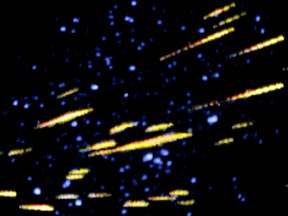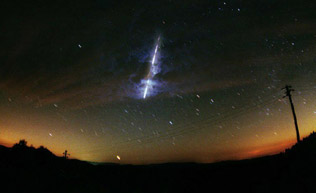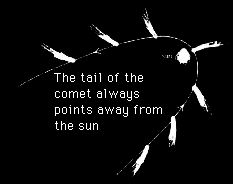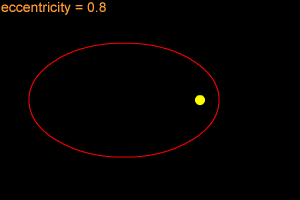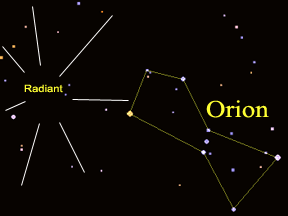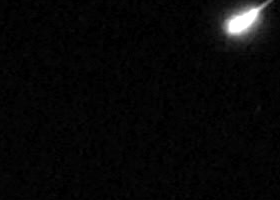Click on image for full size
Original animation by Windows to the Universe staff (Randy Russell). Images courtesy NASA/JPL.
Quadrantid Meteor Shower
The Quadrantid meteor shower happens every year in January. Meteor showers are times when you can see many meteors or "shooting stars" in one night. There are several meteor showers each year. Most meteor showers can be seen for several nights. Usually, there is one night when you can see the most meteors. That night is called the "peak" of the meteor shower. The peak of the Quadrantid shower is around January 3rd.
In 2010, the evening of January 3rd will be the best time to see Quadrantid meteors. However, the Moon may make it hard to see Quadrantid meteors in 2010. The Moon will be just past its full phase. Bright moonlight makes it hard to see dim meteors.
During a meteor shower, it looks like all of the meteors shoot outward from one place in the sky. That point in the sky is called the "radiant" of the meteor shower. Each shower has a different radiant. Meteor showers are usually named after the constellation that their radiant is in. But the Quadrantids are a bit odd!
In 1795 a French astronomer made up a new constellation. He called it Quadrans Muralis, which is the name of an instrument he used to measure the positions of stars. About 40 years later, other astronomers discovered a new meteor shower. The radiant of the new shower was in Quadrans Muralis, so they named it the Quadrantid meteor shower. However, in 1922 a group of astronomers got together and made up the official list of 88 constellations that we have today. Quadrans Muralis was not on that list... so the Quadrantids are named after a constellation that doesn't exist any more!
Most of the Quadrantid meteoroids are very, very small - about the size of a grain of sand! However, they are moving very, very fast - around 41 km/s (about 92,000 mph)! When they hit Earth's atmosphere, they burn up and glow; the glowing trails they leave behind for a second or two are what we see as meteors.
Can you guess where meteors come from? Most meteoroids in meteor showers are actually dust from a comet! When a comet gets near the Sun and heats up, its ices melt and dust trapped in the ice escapes into space. The dust spreads out over the comet's orbit. When Earth crosses the comet's orbit, we run into the dust - and see a meteor shower!
The Quadrantids are a strange meteor shower. People have known about most of the big meteor showers for many, many years. But not the Quadrantids! The first time anyone noticed the Quadrantids was in the 1820s and 1830s. Astronomers hunted for the comet that the Quadrantids came from for a long time. Finally, in 2003, an astronomer named Peter Jenniskens found an asteroid that seemed like it was on the right orbit to make the Quadrantids. Some astronomers think that asteroid is really a piece of an old, "extinct" comet. Some scientists believe that it might be part of a comet that was seen in China, Korea, and Japan in 1490 and 1491. Maybe that comet broke apart, and some of the pieces became the Quadrantid meteoroids.







